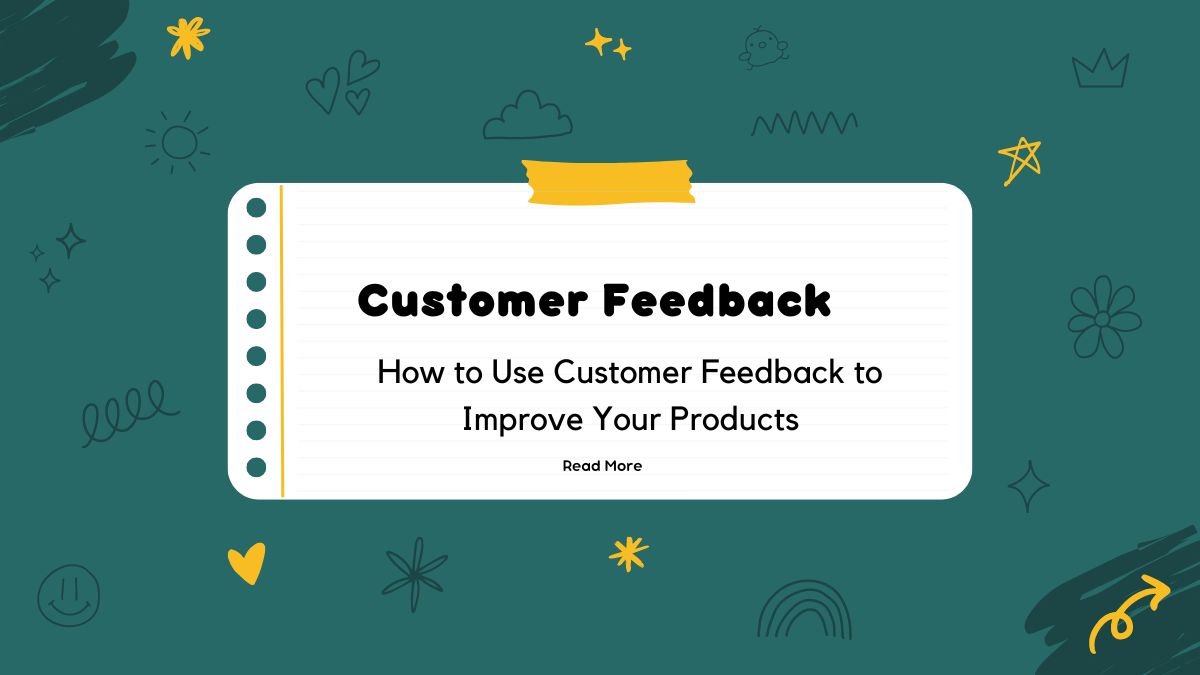
Business is competitive. Success requires understanding and meeting customer needs. One of the best ways to improve your products and services is by using customer feedback. This guide covers how to: gather, analyze, and use customer feedback. It is a key way to drive product improvements and business growth.
1. Why Customer Feedback Matters
Customer feedback provides invaluable insights. It shows how people see your products and how to improve them. It helps you understand what your customers like, dislike, and what they want to see changed. By fixing these concerns, you can make customers happier. This will also keep more of them around and set you apart from competitors.
2. Methods for Collecting Customer Feedback
2.1 Surveys and Questionnaires
Surveys and questionnaires are traditional yet effective tools for gathering structured feedback. You can email them, embed them on your website, or share them on social media. To maximize the effectiveness of surveys:
- Design Clear Questions: Use a mix of quantitative (e.g., Likert scale) and qualitative questions (e.g., open-ended) to capture comprehensive feedback.
- Keep It Short: Ensure the survey is concise to encourage completion.
- Offer Incentives: Provide discounts or entry into a giveaway to increase participation.
2.2 Customer Interviews
Conducting one-on-one interviews can yield deep insights. These conversations let you explore specific issues in detail. They help you gain a nuanced understanding of customer experiences.
- Prepare Thoughtful Questions: Focus on the customer’s journey and pain points.
- Record and Analyze: With permission, record interviews to analyze responses later.
- Build Rapport: Make customers feel comfortable to elicit honest feedback.
2.3 Social Media and Online Reviews
Social media platforms and review sites are goldmines for unsolicited feedback. Monitor these channels regularly to stay informed about public perception and emerging trends.
- Use Social Listening Tools: Tools like Hootsuite and Brandwatch can help track mentions and sentiment.
- Engage with Customers: Respond to comments and reviews to build relationships and gain further insights.
2.4 Usability Testing
Usability testing involves observing how users interact with your product. This method helps identify usability issues and areas for improvement.
- Create Scenarios: Develop realistic tasks for users to complete.
- Observe and Record: Note difficulties and suggestions while users perform tasks.
- Iterate Based on Findings: Use observations to refine product design and functionality.
3. Analyzing Customer Feedback
3.1 Categorize Feedback
Organize feedback into categories such as usability, features, performance, and customer service. This helps in identifying recurring themes and prioritizing improvements.
- Create Tags: Use tags or labels to classify feedback efficiently.
- Identify Patterns: Look for common issues or requests across different feedback sources.
3.2 Quantitative Analysis
Quantitative data from surveys can be analyzed using statistical methods. Calculate average ratings, frequency of responses, and other metrics to gauge overall sentiment.
- Use Data Visualization: Graphs and charts can help illustrate key findings.
- Benchmark Performance: Compare feedback against industry standards or past performance.
3.3 Qualitative Analysis
Qualitative feedback requires a more subjective approach. Find key phrases, feelings, and examples to get the context of customer comments. Understand the impact too.
- Perform Thematic Analysis: Group similar feedback into themes or categories.
- Utilize Text Analysis Tools: Tools like NVivo or Atlas.ti can assist in coding and analyzing qualitative data.
4. Implementing Feedback to Improve Products
4.1 Prioritize Changes
Not all feedback will be actionable or feasible. Consider suggestions based on factors. These factors include impact, cost, and alignment with your product strategy.
- Create a Prioritization Matrix: Assess feedback based on urgency and benefit.
- Involve Stakeholders: Collaborate with team members to determine which changes will be most beneficial.
4.2 Develop an Action Plan
Once priorities are set, make a detailed plan. It will outline the steps to address feedback. Include timelines, responsible parties, and required resources.
- Set Clear Objectives: Define what you aim to achieve with each improvement.
- Track Progress: Monitor the implementation process and adjust as needed.
4.3 Communicate Changes
Inform customers about the changes made based on their feedback. This shows you value their input. It builds trust and encourages them to stay engaged.
- Use Multiple Channels: Announce updates through email, social media, and your website.
- Highlight Key Improvements: Clearly articulate how customer feedback led to specific changes.
4.4 Monitor and Iterate
Post-implementation, continue to gather feedback to evaluate the effectiveness of the changes. This iterative process helps in fine-tuning products and ensuring they meet customer expectations.
- Solicit Feedback on Changes: Ask customers if the improvements meet their needs.
- Continuously Improve: Use ongoing feedback to make further refinements.
5. Case Studies of Successful Feedback Implementation
5.1 Example 1: Software Development
A software company used customer feedback to overhaul its user interface. They conducted usability tests and studied survey data. They found key pain points and redesigned the interface. The changes led to a 30% increase in user satisfaction. They also led to a big drop in support queries.
5.2 Example 2: Retail Industry
The retailer added a feedback system. It gathers input on product quality and fit. Based on the feedback, they adjusted their sizing charts and improved fabric quality. This led to a 20% increase in repeat purchases and positive reviews.
6. Conclusion
Leveraging customer feedback is a powerful strategy for product improvement and business growth. You can enhance customer satisfaction by collecting, analyzing, and using feedback. It can also help you drive innovation and stay competitive. Embrace feedback. It is a valuable resource. Integrate it into your product development processes. This will build better customer relationships and bring long-term success.